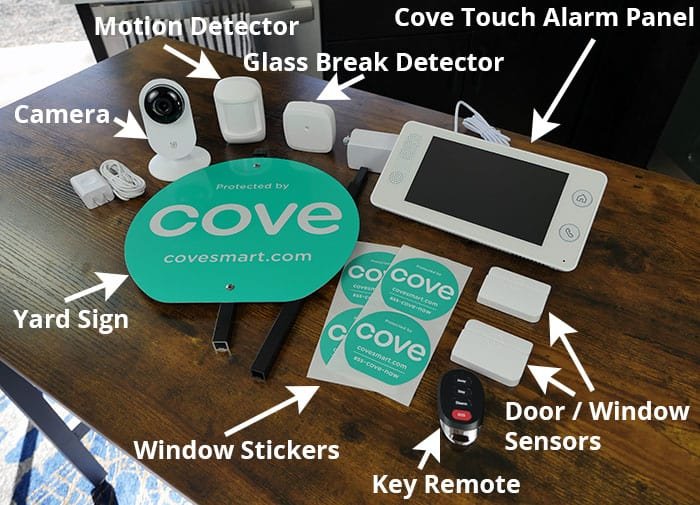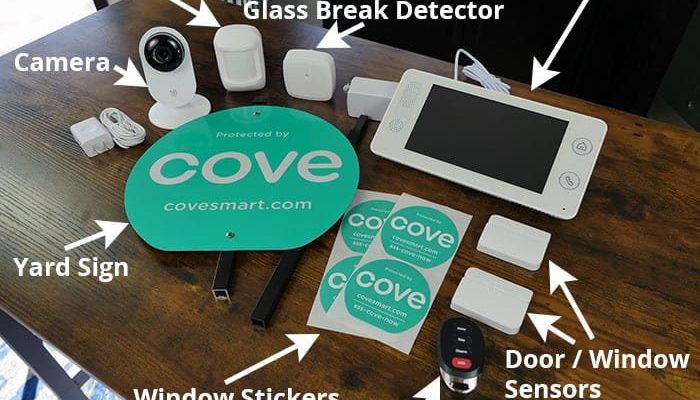
Honestly, navigating landlord-tenant stuff can already feel like you need a decoder ring. Add technology like Cove’s security system, with its code syncing, remote pairing, and app registration steps, and most renters feel out of their depth. But don’t worry: we’ll walk through exactly how this works, what tenants can and can’t do, and how to avoid any “whoops” moments along the way.
Understanding Cove Security Systems in Rental Properties
When a landlord installs a Cove security system, the intention is usually pretty simple: secure the property and keep everyone safer. Cove is designed for ease of use, with entry sensors, motion detectors, key remotes, and a smart control panel. Everything syncs together wirelessly, so installation doesn’t require tearing up walls or running miles of cable. For renters, this is great news—no messy installations, no permanent changes.
But here’s the thing: ownership of the system doesn’t always mean control. Just because your landlord paid for it and set it up doesn’t mean you automatically get full access. Cove handles user registration and account linking in a way that puts the original purchaser—in this case, the landlord—in the driver’s seat. You can think of it like being handed the spare keys to a car, but not yet being listed on the insurance.
If you want to use features like mobile app control, emergency alerts, or even just change the code for the main panel, you usually need your own Cove account tied to the system. That’s where things can get sticky—because Cove, like most smart security companies, cares about who owns the account, not just who lives in the home.
Who Can Register a Cove Security System?
This is the heart of the question. Cove only allows registration and account management by the official system owner—the person whose name is on the purchase, activation, or original contract. In nearly all rental cases, that’s the landlord. The system’s serial number, activation code, and service subscription are all tied to their details.
So, if you’re a tenant, you can’t just download the Cove app, enter the code from the back of the panel, and take over. Cove’s support team will ask for proof of purchase or account-specific information. This is all about security: they don’t want just anyone—tenant, guest, or random visitor—resetting or registering the system without the owner’s say-so.
But here’s where it gets practical. Sometimes, landlords set up Cove so tenants can use specific features: arming/disarming the system, pairing new remotes, syncing codes, or, in some cases, managing emergency contacts. In these situations, the landlord stays the account owner but gives tenants limited access, usually through additional user profiles or guest codes.
If you want full control—like registering for monitoring, troubleshooting, or resetting the system—you’ll need the landlord to either add you officially, transfer ownership, or work with Cove support. It’s not automatic, and trying to hack around it will usually get you locked out or flagged by the company.
What Tenants Can (and Can’t) Do With a Landlord’s Cove System
Let me explain how this typically goes in the real world. Imagine you move in, and there’s already a Cove keypad and a couple of remotes. You want to be safe but also don’t want random notifications going to your landlord every time you come home.
- Arming/Disarming: Most landlords share the main entry code. Tenants can arm or disarm the system, and sometimes even set up their own user code if permitted by the owner.
- Pairing Remotes: If you get permission, you can pair a new Cove remote or key fob. Ask the landlord or property manager for the instructions and pairing code.
- App Registration & Monitoring: This is off-limits unless the landlord adds you as a co-user. The system’s monitoring and control are tied to the owner’s Cove account login and cannot be transferred without their approval.
- Resetting the System: You can’t reset or factory default a Cove system purchased by your landlord. Doing so may breach your lease and could disrupt security services.
- Battery Replacement & Maintenance: Usually fair game. Most landlords appreciate tenants keeping remotes and sensors powered, but it’s always polite to check in before you start popping sensor batteries out.
Here’s the nugget: you have use privileges, not full rights. Think of it like borrowing a friend’s Netflix login—you can watch, but you can’t change the password or subscribe to new channels.
How Landlords and Tenants Can Coordinate Cove System Access
The best setups happen when landlords and tenants are on the same page about security. If you’re a tenant and you want to use Cove features beyond the basics, communication is everything. Reach out to your landlord and ask:
- If you can have your own user code for arming/disarming
- If remote pairing or syncing is allowed
- Whether you can have the Cove app on your phone (as a guest, not the main account holder)
- Who gets notified in case of an emergency—landlord, tenant, or both?
Some landlords are happy to set up guest access via Cove’s user management options. Others prefer to keep everything under their own control. It really depends on the landlord’s comfort level and the lease agreement. If they’re hands-on, they might want to stay the sole point of contact for all troubleshooting, code resets, and system updates.
For longer-term rentals, it’s not uncommon for landlords to work with Cove to officially transfer the system to the tenant’s name (usually after a lease renewal or multi-year agreement). This handoff means the tenant becomes the official registered user, pays for monitoring, and manages all pairing, syncing, and support directly.
Common Issues When Registering Cove Security as a Tenant
Even with the friendliest of landlords, hiccups can pop up. Sometimes tenants try to register or reset a Cove system and hit a brick wall with customer support. Here’s why:
- No Proof of Ownership: Cove support needs to verify who owns the system. If you can’t provide the purchase code or contract info, you’re out of luck.
- Linked Accounts: The system doesn’t support multiple main owners—only one master account controls monitoring, app features, and code resets.
- Syncing Issues: Trying to pair new remotes or sensors without the main account’s permission can lead to a sync failure, leaving your setup half-completed or triggering alerts.
- Lease Agreement Limits: Your rental contract might specifically state you can’t re-register, reset, or modify the security setup—so check the paperwork before you try anything major.
If you’re really stuck, the best bet is to loop in your landlord and ask them to handle any code or registration changes directly with Cove. Most issues get sorted out quickly when the owner makes the call.
Alternatives for Tenants: Adding Personal Security Devices
Maybe you want more control than your landlord’s system allows. Or perhaps you just want to add a little extra security without stepping on any toes. The good news is, there are ways to do this without interfering with the Cove system:
- Personal Alarms: Small, battery-powered alarms can be added to doors or windows for extra peace of mind. These don’t require app syncing or system codes.
- Standalone Cameras: Many smart cameras (like Wyze or Blink) don’t affect the Cove system and let you monitor certain areas via your own remote app.
- DIY Sensors: Temporary, stick-on sensors that beep or flash can supplement security and get packed up when you move out.
For tenants, the trick is to pick devices that don’t require system registration, pairing, or code sharing with the landlord’s setup. Keep it simple and independent.
If you move into a new place, don’t forget to talk about batteries! Many renters assume it’s not their problem, but landlords appreciate when tenants keep remotes and sensors powered (and let them know if there’s ever a problem).
When System Registration Should Be Transferred
There are times when it just makes more sense for the tenant to officially register the Cove security system. If you’re settling in for years or taking over the property as part of a lease-to-own, transferring system registration is the practical step.
Here’s how this usually plays out:
- Landlord contacts Cove and requests a transfer, providing proof of ownership and consent in writing.
- Tenant sets up a new Cove account, pairs the system, and takes over monthly monitoring payments.
- The old owner is removed from all notifications and controls.
Honestly, most landlords only do this if they know and trust the tenant, or if the tenant is taking on full responsibility for everything security-related. It’s important to get this in writing and update your lease agreement so everyone knows who’s responsible for monitoring, troubleshooting, and battery changes.
Final Thoughts: What’s Best for Tenants and Landlords With Cove Security?
So, can tenants register Cove security systems purchased by their landlord? Usually, not without help. The system is built with owner-first controls, so unless the landlord is on board and willing to add or transfer you, you’ll get access to basic features at best—arming, disarming, a shared remote, or maybe a personal user code.
The smartest move is to work with your landlord, keep communication open, and only handle the system within your rights. If you want more control or worry about limited access, think about supplementing with your own security gadgets that don’t require registration or code syncing with Cove.
Moving into a new rental should feel safe, not stressful. With a bit of teamwork—and by respecting the boundaries of the Cove system—you and your landlord can both rest easier, knowing security is working for everyone.
